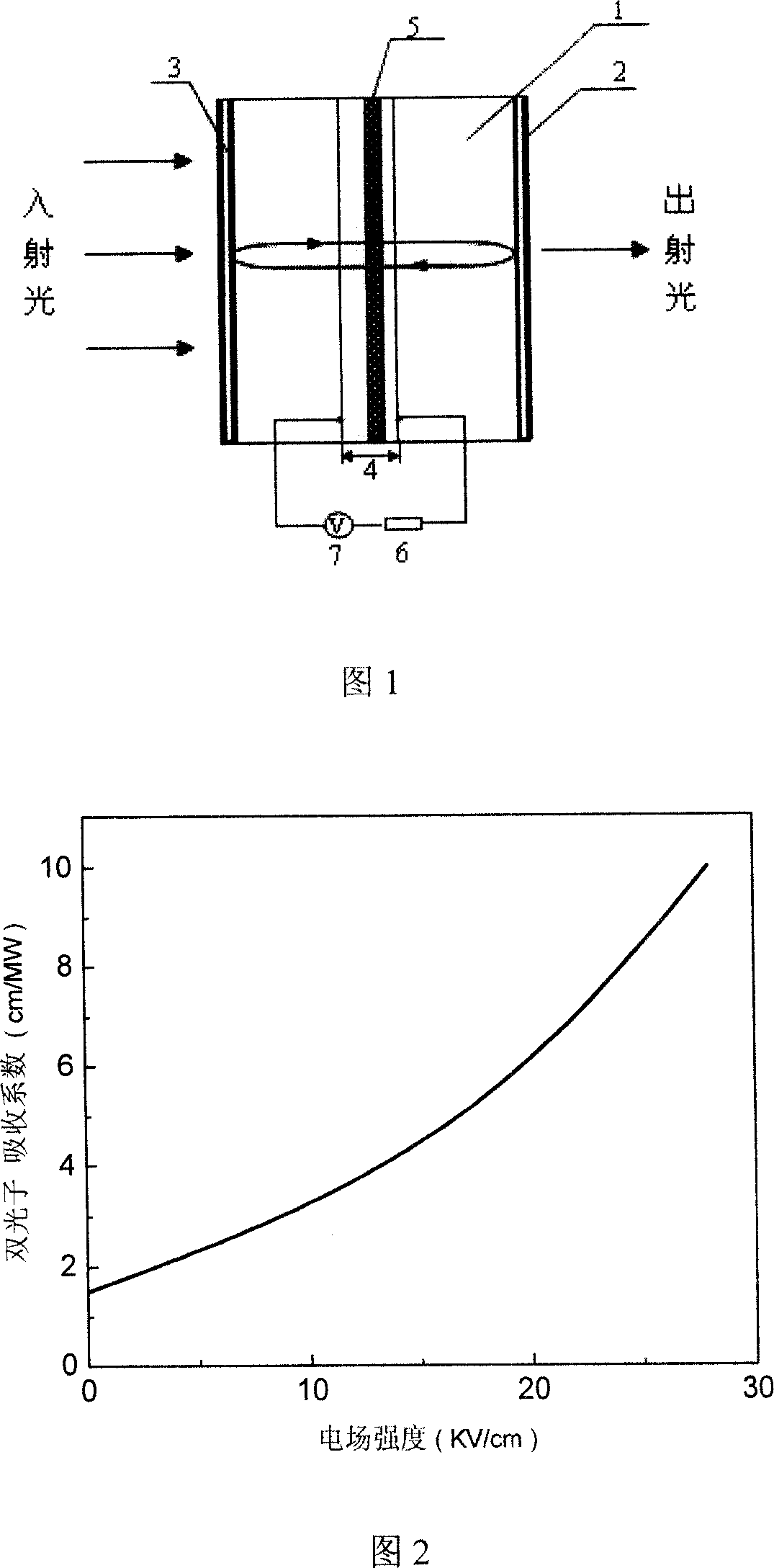Te, cadmium and Hg optical range limiter with the continuously adjusting output light intensity of the passive saturated clamp
An output light, passive technology, applied in the structure/shape of lasers, laser parts, optical resonators, etc., can solve the problem that the output light intensity cannot be continuously adjusted.
- Summary
- Abstract
- Description
- Claims
- Application Information
AI Technical Summary
Problems solved by technology
Method used
Image
Examples
Embodiment Construction
[0015] Below with incident wavelength 7920nm as design wavelength, in conjunction with accompanying drawing to the concrete of optical limiter of the present invention
[0016] The implementation mode is described in detail:
[0017] The resonant cavity 1 of the HgCdTe optical limiter of the present invention is made up of a pair of distributed Bragg reflectors 2, and (HL)m or (LH)m dielectric film 3 is plated on two opposite mirror surfaces, and reflector substrate material is Ge, H is the high refractive index film layer SiO, L is the low refractive index film layer PbTe, its refractive index is 2.35 and 5.55 respectively, m is the number of high and low refractive index film layers alternately stacked, m=2, and the optical thickness of the film layer is lambda 0 / 4, the resonant cavity length is 7.92mm. The HgCdTe photodiode 4 is placed in the resonant cavity, and the space charge region 5 in the p-n junction of the photodiode is at the center of the resonant cavity, so t...
PUM
 Login to View More
Login to View More Abstract
Description
Claims
Application Information
 Login to View More
Login to View More - R&D
- Intellectual Property
- Life Sciences
- Materials
- Tech Scout
- Unparalleled Data Quality
- Higher Quality Content
- 60% Fewer Hallucinations
Browse by: Latest US Patents, China's latest patents, Technical Efficacy Thesaurus, Application Domain, Technology Topic, Popular Technical Reports.
© 2025 PatSnap. All rights reserved.Legal|Privacy policy|Modern Slavery Act Transparency Statement|Sitemap|About US| Contact US: help@patsnap.com

